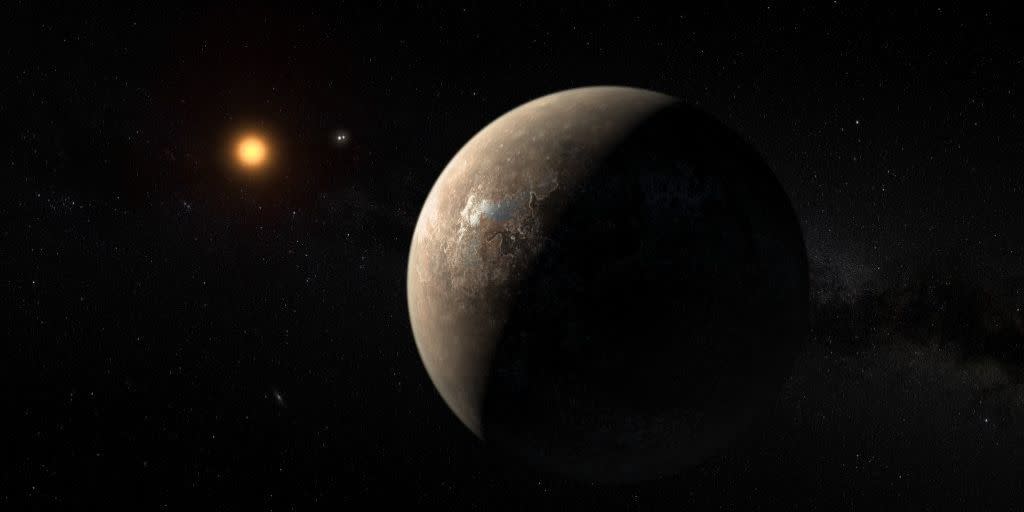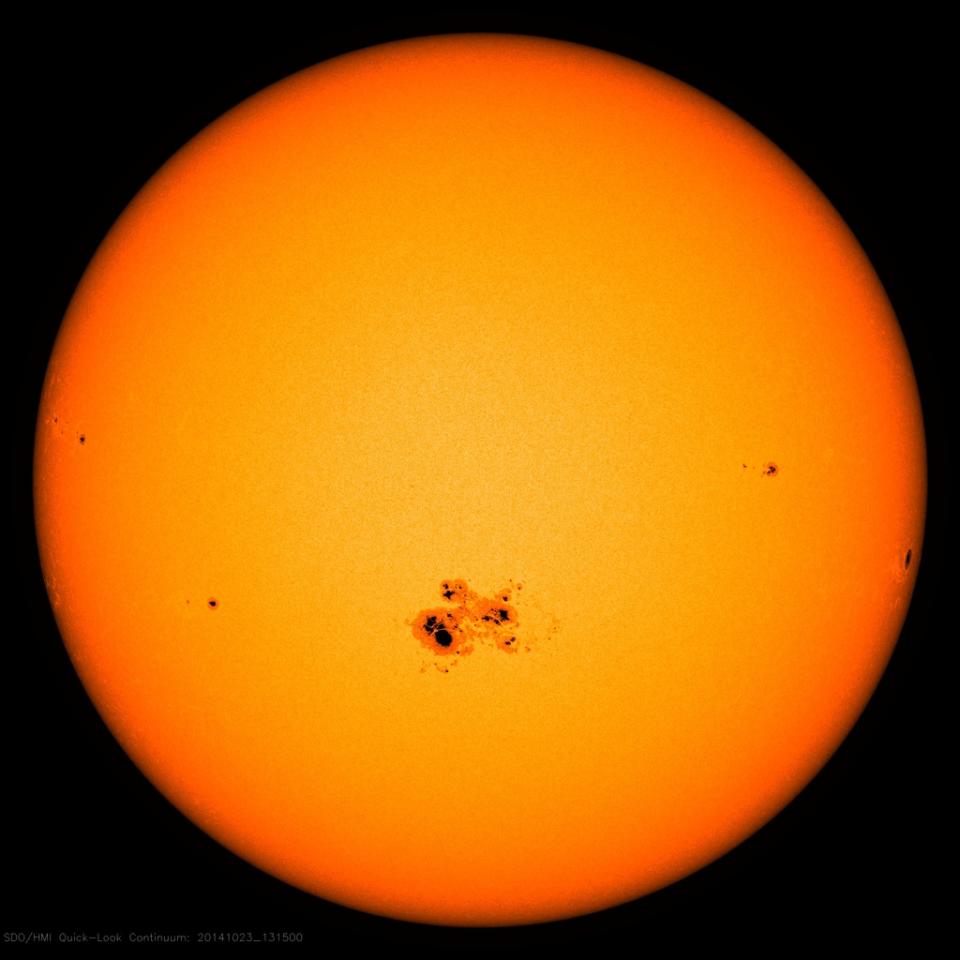Our Nearest Stellar Neighbor Has Fiery Sun-Like Flares

Harvard astronomers have discovered that Proxima Centauri, the nearest star to our solar system, may experience solar flares and sunspots, just like our own sun. This discovery raises questions about how sunspots form, and whether life could exist around Proxima Centauri.
Proxima Centauri is our closest stellar neighbor, just over four light years away but too small and faint to be seen with the naked eye. It made the news back in August when astronomers discovered an Earth-like planet-Proxima B-orbiting it. Located in the star's habitable zone, Proxima B could potentially harbor extraterrestrial life. Maybe.
Now, astronomers at the Harvard-Smithsonian Center for Astrophysics have discovered another interesting fact about Proxima Centauri: It seems to have sunspots.

Sunspots often appear on our own sun as darker, cooler regions on its surface, kind of like solar acne. Our sun follows a regular 11-year cycle where sunspots grow more and less frequent. At the peak, about 1 percent of our sun's surface is covered in sunspots.
Sunspots are caused by convection in the interior of our sun, the process where hot plasma rises to the surface, cools, and then falls back into the interior. It's the same process that happens to boiling water in a pot on top of a stove.
This convection layer covers the outer third of our sun's interior. The inner two-thirds are relatively calm. Scientists believe that internal forces between the moving convection layer and the calm inner layer are what causes sunspots.
However, the discovery of sunspots on Proxima Centauri throws that hypothesis into doubt. Proxima Centauri is too small to have both a convection layer and a calm inner layer. Instead, Proxima Centauri's convection layer should go all the way through the star.
If Proxima Centauri doesn't have that internal friction, it shouldn't have sunspots. And yet it does. Proxima Centauri appears to have even more sunspots than our own sun, covering almost half of its surface at the peak of its seven-year cycle.
[contentlinks align="left" textonly="false" numbered="false" headline="Solar%20Dangers" customtitles="The%20Looming%20Threat%20of%20a%20Solar%20Superstorm%7CHow%20a%20Solar%20Flare%20Almost%20Triggered%20a%20Nuclear%20War%7CHow%20Can%20We%20Predict%20Solar%20Flares?" customimages="||" content="article.7433|article.22265|article.11441"]
This discovery of sunspots on Proxima Centauri seems to suggest that our understanding of our own stellar fire ball isn't quite as comprehensive as it might seem, as well as casting doubt on the idea of life on Proxima B.
If Proxima Centauri has sunspots, that means it also probably has other types of solar disturbances, like solar flares and coronal mass ejections, so if Proxima B doesn't have a strong magnetic field, these flares could bombard the planet's surface with deadly radiation, scouring the planet of any signs of life on a regular basis.
While this discovery is important for our understanding of our own sun and other stars, it could also mean that if we want to find life on other planets, we may have to widen our search.
Source: Harvard-Smithsonian CFA
You Might Also Like
